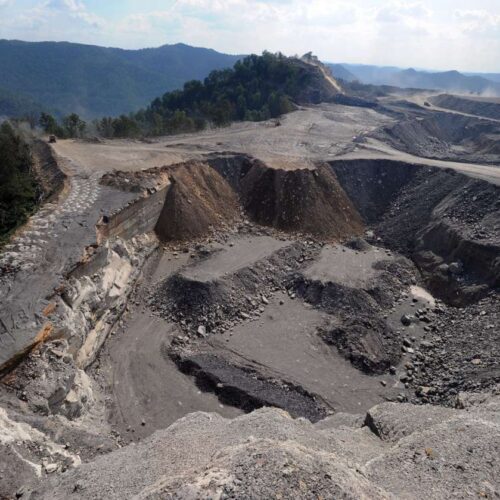Introduction
In a corner of Appalachia where the tops of coal-rich mountains are lopped off with regularity, the Spruce No. 1 mine would stand out. Now, thanks to a judge’s ruling, the hotly contested strip mine project may move forward.
The mine, proposed in Logan County, W.Va., by Mingo Logan Coal Co., a subsidiary of St. Louis-based Arch Coal, would tear up nearly 2,300 acres and fill seven miles of streams with rubble. Its footprint, according to the Environmental Protection Agency, would “take up a sizable portion” of downtown Pittsburgh.
Mine opponents were encouraged when, in January 2011, the EPA vetoed a Clean Water Act permit that had been issued to Mingo Logan four years earlier by the U.S. Army Corps of Engineers. They hoped it would be the first of many overrides of Corps decisions by the Obama administration.
A federal judge’s opinion, issued March 23, has thrown everything into doubt.
Ruling on behalf of Mingo Logan, U.S. District Judge Amy Berman Jackson, an Obama appointee, held that the EPA had overstepped its bounds. If the agency had problems with the mine, Jackson wrote, it should have spoken up before the Corps issued the permit, which allows the company to dump dirt and other debris into still-healthy streams known as Pigeonroost Branch, Oldhouse Branch and their tributaries.
“We’re pleased the district court has ruled in our favor — confirming that our Spruce No. 1 permit remains valid,” Arch Coal said in a statement.
The National Mining Association said the judge’s ruling “struck another blow for restoring the rule of law and regulatory certainty by rejecting [the EPA’s] view that it has unbounded authority to retroactively revoke permits issued by another federal agency.
“The current permitting process is already a complicated and protracted affair. If we are to encourage investments, grow our economy and create jobs, companies need the certitude their success in obtaining permits will not later be robbed by the whims of the EPA.”
The EPA says that it and the Department of Justice are reviewing the judge’s decision, which can be appealed. “The decision does not affect the EPA’s commitment to protect the health of Appalachian communities who depend on clean water,” the agency said in a statement.
Nonetheless, Brandon Nida, an environmental activist who lives in the tiny burg of Blair, next to the Spruce No. 1 site, is fuming.
“This town was already pretty much destroyed [by mountaintop removal mining] in the late ‘90s and early 2000s,” Nida said in a telephone interview. “It went from about 700 people to 60 or 70 now. This will just finish it.”
Blair is of particular significance because of its proximity to Blair Mountain, where in 1921 some 15,000 striking coal miners fought a violent battle with police and coal company-backed strikebreakers. Dozens died, and federal troops had to be called in.
The battlefield is “severely threatened by encroaching surface mining operations, and the fate of this remarkable place is uncertain,” says the preservation group Friends of Blair Mountain.
The EPA says much is at stake.
The dumping of mine waste into Pigeonroost Branch and Oldhouse Branch “will have an unacceptable adverse effect on municipal water supplies, shellfish beds and fishery areas [and] wildlife,” the agency said in its January 2011 “final determination” report. “EPA has concluded that the full construction of the Spruce No. 1 Surface Mine will transform these headwater streams from high quality habitat into sources of pollutants … that will travel downstream and adversely impact” wildlife.
Jim Hecker, a lawyer with Public Justice, a Washington-based public-interest law firm that’s been fighting Spruce No. 1 since 1998, said it’s essential that the government appeal the court decision.
The Clean Water Act says the EPA can veto a Corps permit “whenever it determines a project is environmentally unacceptable,” Hecker said. “To me, ‘whenever’ is the broadest possible language Congress could have used.”
Hecker fears Jackson’s ruling will “embolden the coal companies. That’s been their strategy — to attack EPA’s authority. This is a mine that would fill over seven miles of streams. It’s massive. If they can mine at that magnitude without scrutiny from EPA, it’s very troubling.”


Join the conversation
Show Comments